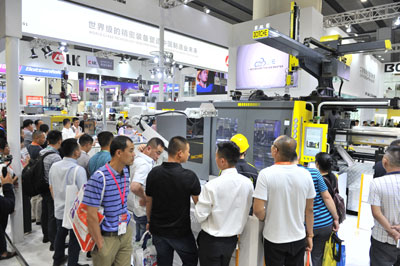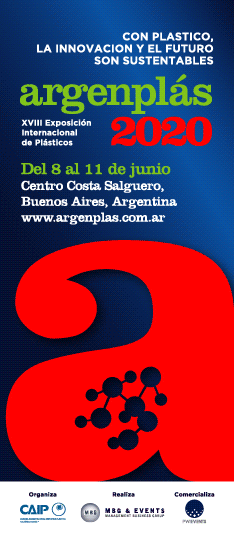| Plastics News |
Chinaplas 2020 focuses on tapping into potential in Asian markets
Decembrer, 12, 2019 - As the global economy faces mounting downward pressure and factors of uncertainties, the global plastics and rubber industries are at crossroads. The challenges are steering investments to become more conservative as companies adjust their strategies. However, growth outlook remains strong for Asian markets that are not new to economic ups and downs, especially the emerging economies in the region. Chinaplas 2020 takes a "local + regional + global" approach and provides a platform of highly cost-effective and technologically advanced solutions that fit the needs of new markets for both upstream and downstream players. Asia leads the world in economic vitality Asia has become the largest cluster of emerging economies in the 21st century. This region boasts more than half of the world's population, expanding middle class, increasing consumption, and continuous industrial transformation. Asia's fast rise remains attractive despite economic slowdown. Asia currently represents more than a third of the global economy, and its self-reliance continues to strengthen – trade within Asia far exceeds the total of Asia's trade with other regions such as North America and Eurozone. Attracted by the region's momentum, foreign investment continues to grow in Asia. According to the "Progress of Asian Economic Integration Annual Report 2019" by the BoAo Forum for Asia, investments are retreating from developed economies, especially the capital market in the U.S., and instead going into emerging Asian markets. China's Ministry of Commerce announced in November 2019 that China is gaining more foreign investment, not less, despite the sluggish global investment scene. During the first three quarters of 2019, China established more than 30,000 new foreign-invested enterprises and utilized 683.2 billion yuan of foreign investment – up 6.5% year over year. Strong growth in emerging Asian markets Emerging economies in Asia are continuously introducing new policies to help companies transform and to attract foreign capital. Combining that with their domestic market potential, the manufacturing sector is growing in leaps and bounds. Every year, about 60% of Chinaplas overseas visitors come from Asia. And the number of visitors from Southeast Asia has been growing in recent years. Vietnam is becoming a rising star in the region. According to the nation's General Statistics Office, its GDP grew by 6.98% YOY in the first nine months of 2019, the highest rate in the past 9 years. Furthermore, the plastics industry there has averaged annual growth rate of 15-20% in the last decade. Among Vietnam's advantages is its demographic dividend that features a large pool of low-cost labor, combined with competitive costs of land, energy, and taxes. In addition, its ports and stable currency have supported the growth of its export-oriented manufacturing sector. Many multinational conglomerates have established footprint in Vietnam, including Nike, Adidas, Olympus, Microsoft, Nokia, Canon, LG, Foxconn, Sony, Samsung and more. Chinese plastics machinery manufacturers, such as Haitian, BORCH, Yizumi and JWELL, have also set up production bases, warehouses, subsidiaries, and after-sales service offices there. Just like Vietnam, other Asian countries such as Thailand, Malaysia, Indonesia and India are also delivering solid growth, each with strong focuses. Dubbed as the Detroit of Asia, Thailand has become an automotive capital with 2019 production expected to reach 2.15 million vehicles. Thailand is also known as the World Kitchen, and its packaging industry is expected to grow at a CAGR of 4.2% between 2017 and 2020. Malaysia is also benefiting from rapid growth of the packaging industry, with more than 1,500 plastics processors in the nation. Malaysia projects its food and beverage industry to reach $268 million in revenue in 2019, sustaining an 18% compound annual growth rate; in the meanwhile, the pharmaceutical industry is also giving a boost to the packaging market. In Indonesia, the food and beverage market grows 3.7% annually and supports the expansion of the plastics industry. Automotive investment has been active in Indonesia as well. Hyundai is investing in an electric car plant with annual production capacity of 250,000 vehicles. An investment consortium from South Korea, Japan and China is building a $4 billion EV battery plant. In addition, Thailand, Malaysia and Indonesia – the "Big Three" – have released their respective roadmaps for electric vehicles. India, home to a population of 1.3 billion, boasts demographic dividend, a massive and fast expanding domestic market, and rapidly growing construction, automotive and chemical industries. China rises as a popular regional headquarter location The global appeal of China's enormous market is self-evident. The nation continues to see advancement of urbanization, release of purchasing power of non - tier - 1 cities, a thriving digital economy, leading 5G and blockchain technology, and connected mobility. The sheer size of its domestic market volume, booming exports, and strong investment are driving China's economy on a high-quality growth path. In spite of the global economic slowdown, foreign-invested enterprises in China remain optimistic about the Chinese market and continue to invest at these critical times. China is the world's largest producer and consumer of chemicals. There is no slowdown in the investment of foreign plastics machinery and materials suppliers, who are increasingly setting up regional headquarters, production bases, and/or R&D centers in China. German chemical giant BASF is investing a total of $10 billion in an integrated production base in Guangdong. It is also building a brand new innovation park in Shanghai and a comprehensive surface treatment site in Zhejiang. ExxonMobil, Lanxess, Solvay, Dow Chemical, Shell, Saudi, Saudi Aramco and many more well-known multinational companies are also expanding their investment in China with major petrochemical projects via joint venture or sole proprietorship. Grounded in Asian markets To seize the opportunity with rising Asian economies, the plastics and rubber industries must not miss the upcoming Chinaplas 2020. As the leading global trade show in the industry, Chinaplas was launched in 1983 and has witnesses the sectors' development along with China's economic transformation. Chinaplas will present 3,900+ exhibitors (more than 2,500 exhibitors from China), 11 country/region pavilions including Germany, Italy, U.S., and Japan, as well as 19 theme zones, centering around innovative solutions in plastics and rubber machinery, materials and processes. Visitors will be able to take a peek at the most cutting-edge technologies in the world, but also find highly cost-effective solution packages. China's plastics and rubber machinery and material have made great progress and gained market popularity with technologies comparable to international standards, excellent durability and stability, quality of service and cost-effectiveness. In Asia, especially Southeast Asia, machinery and materials from China well fit the needs of the industry at the current stage. Song Yew Eng from Malaysia's Chuan Weng Plastic SDN BHD said, "In the past, we relied on labor supply from Indonesia and Vietnam to offset our shortage, but workers from Vietnam are on the decline. I found the right machinery at Chinaplas to make up for our labor shortage. There are lots of options for semi-automatic machines that meet production needs and are cost-effective at the same time. As of now, our production has not reached the stage of full automation, and high-end machinery does not suit our current particular needs." Due to the relatively weak industrial infrastructure in Vietnam, the plastics industry there faces shortages of raw materials and processing equipment – companies there are in dire need of advanced production equipment and materials. Tran Ngoc Linh, Director of Manutronics in Vietnam, stated during his last Chinaplas visit, "I'm from Vietnam. I come to Chinaplas mainly to find new business and new partners. Since we are now focusing on one-stop solutions, we are looking for materials for electronic components. The show is massive. I've spent two days on the show floor, but still haven't been able to visit all of the suppliers that I'm interested in." Chinaplas has deep roots in China but has tasked itself with serving the Asian markets to the fullest. Regardless of their region and business scale, visitors should be able to find suitable products and solutions to tackle business growth challenges and reduce production costs, reach breakthroughs in new product development, and accomplish environmentally friendly and sustainable growth. Chinaplas is scheduled to return to the National Exhibition and Convention Center, in Hongqiao, Shanghai, PR China on April 21-24, 2020. This iconic industry event is expected to present 340,000 square meters of exhibition space, bring together 3,900+ global exhibitors and 180,000+ visitors, to join hands to overcome the challenges, and together create a prosperous future. Source: Chinaplas
|


